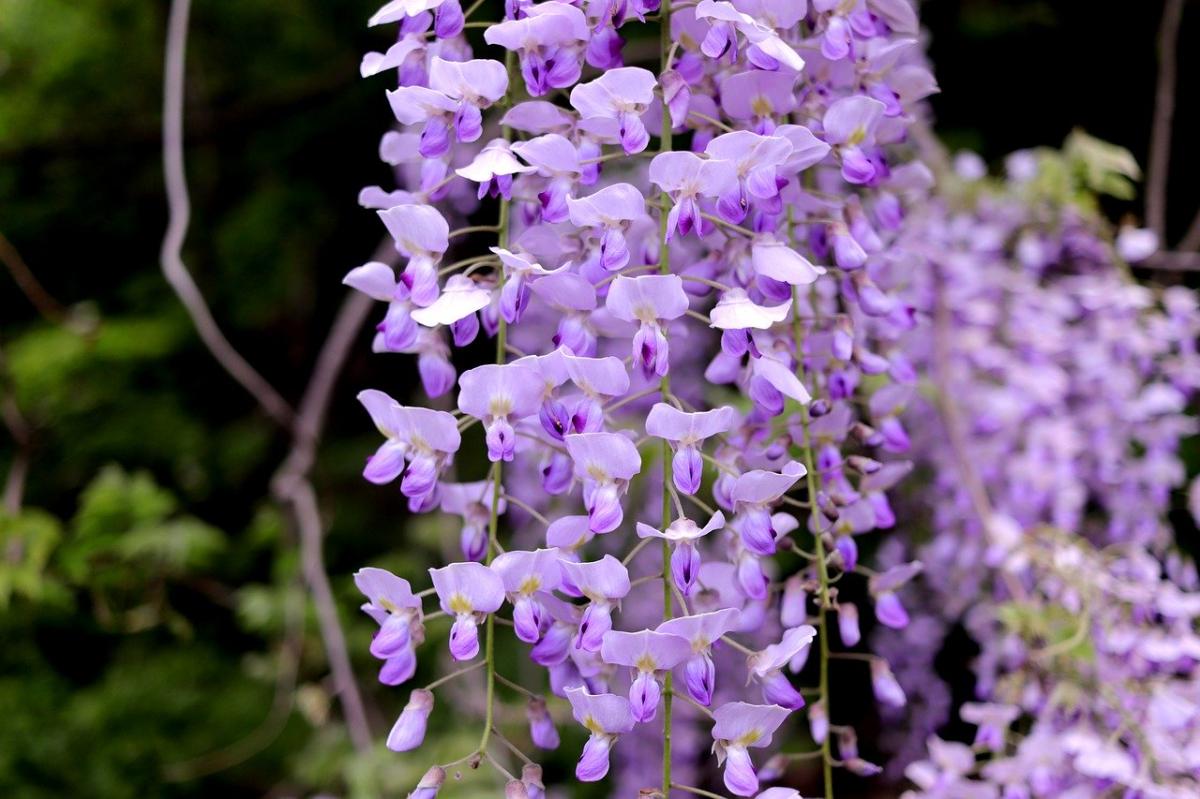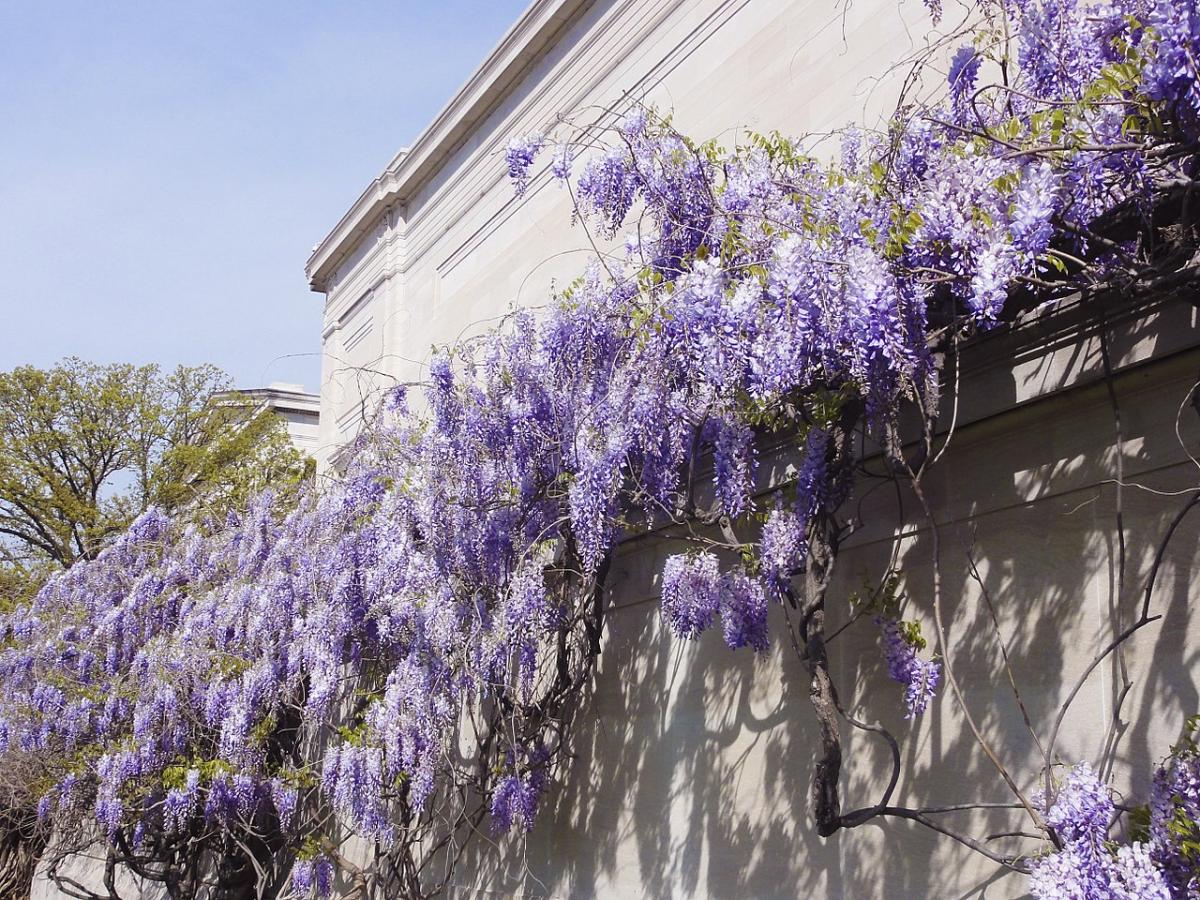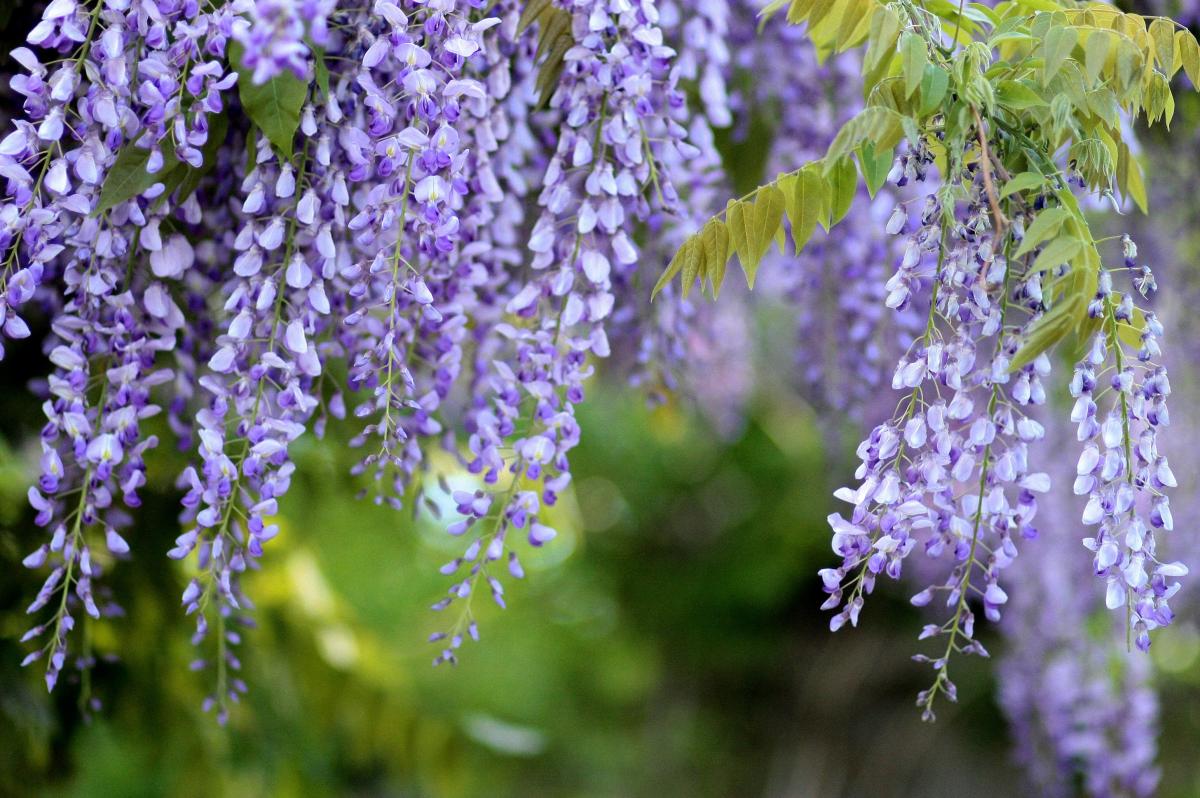
Wisteria or wisteria is one of the most resistant climbing plants that exist, as well as beautiful, especially when they are in flower. However, it is a living being with needs that must be met, since otherwise we would not be able, for example, to beautify our garden.
So, although it may seem incredible at first, we may sometimes wonder how to make wisteria flourish. Namely, What is it that can prevent you from producing your beautiful flowers? Well, since there are several possible causes, let's see them all to know what to do.
Put the wisteria plant in a sunny spot

Image - Wikimedia / Ron Dicker
You can make the mistake of placing the wisteria in the shade, thinking that this way it will grow better, at least the first days. But, although this can be an excellent place if it has never been exposed to the star king before, it can also be the worst if we want it to grow healthy and strong once it is acclimatized.
In fact, the ideal is to expose it to the sun from the first day as long as we have bought it in spring, autumn or winter (If it is summer, yes we will have to protect it a little). If you were not used to it, you will lose some leaves, but that will not be a problem.
On the other hand, so that I can flourish it is necessary that the climate be temperate. Being a deciduous plant that loses its leaves in the fall, it needs to feel the passing of the seasons so that it knows when to resume and stop its growth, when to produce flowers and fruits, etc. For this reason, it is difficult, I would even say impossible, for it to flourish in a climate where the seasons are not well differentiated. Already in the Mediterranean coast it is difficult, since the winters are very mild.
I do not intend to discourage you far from it. But yes, if the climate is especially warm or mild all year round, I recommend you look for other climbers that can adapt better, such as passiflora for example.
Reserve enough space for it to grow
Wisteria is a relatively large plant. The varieties that are marketed can reach a height of up to 10 meters. In addition, they have strong trunks and branches, so it is very important that they are planted in an area where problems cannot arise as they grow. Therefore, a good place can be, for example, next to some garden arches that we have on a path (like this one that they sell here), but always away from other large plants so that they do not compete with each other.
Likewise, we do not recommend planting it near the pool, not only because of its roots, but also because when it lost its leaves in autumn or dropped its flowers, they would end up on the surface of the water. And that's not to mention that if you have children who like to jump in the pool, the water could seriously damage it because it has chlorine. Thus, at least it should be planted at a distance of about five meters, but better if they are more.
In the case that you grow it in a pot, this is a plant that you will have to transplant every 2 or 3 years, since its growth is fast. So if you see the roots coming out of the holes, move it to a larger one in spring, before the leaves sprout. As a substrate, use one for acidic plants or coconut fiber. You can also use, especially if you can water with rainwater, mulch.
Make sure the soil is suitable for your wisteria

Unfortunately, wisteria is a plant that will not grow in any type of soil. It's more, It will only do well, and really well, if the soil has an acidic or slightly acidic pH; that is, if it has a pH between 4 and 6.5. But not only that: this soil must have a very good drainage, be fertile, and light.
Thus, it will NOT grow in clay soils, unless it is regularly fertilized with a fertilizer for green plants or with one for acid plants. Following the instructions on the package, it could be that it grows well, but from my own experience I recommend growing it in a pot filled with substrate for acidic plants or coconut fiber (get it here) when the soil is not suitable. Believe me, it will be easier for you to have it healthy, because you will have it much more controlled.
Do you water it enough?
Irrigation is and always will be (unless devices are invented capable of finding out exactly when a plant is going thirsty, and what exact amount of water it needs) the most difficult task for any gardener or hobbyist. Although experience helps a lot, as you learn through trial and error, there are many things that must be taken into account: wind, rain, location, type of land, etc. To be able to master irrigation, it is highly advisable to know the climate of the area, and for this there is nothing like getting a home weather station (as No products found. for example).
We do not want you to become an expert (unless you like the theme, of course), but for you to understand that the health of your plants, including your wisteria, will be better or worse depending on the climatic conditions in your area. With a station of this type, you will be able to know it, and from there to find out when it is more appropriate to water and when not.
On the other hand, You should know that wisteria does not withstand drought, so you should avoid that the land remains dry for a long time. To give you an idea, I have two in pots, with a substrate made up of 70% akadama and 30% pumice. As I am in Mallorca, in an area where it rains little (only about 350 liters of water a year), and it is quite hot in summer (38ºC we have had it in August), I water them 3-4 times a week. Of course, with the arrival of September, as there are more and more cloudy days and the rains also begin, irrigation is more spaced.
And before I forget: If we have said before that the earth must have a low pH, the pH of the water must not be less. If you are going to use rainwater, perfect, but if not, make sure that the pH is lower than 7 (and higher than 3, as it would not be good if it was too acidic). To do this, you can use a pH meter, such as the strips or a digital one (get it here).
That you do not lack fertilizer

In addition to water, your wisteria will want compost. It is a plant that needs to be fertilized regularly, starting already in spring when its leaves begin to appear, and ending at the end of summer.. As compost you can use either fertilizers (specific for green plants, or acidic like this one that you can buy here), or organic. Of the latter, I personally recommend the guano, in liquid form (for sale here) if you have it in a pot, or granulated (for sale here) or powder if it is in the garden. It has a fast effectiveness, in addition to the essential nutrients for its growth. But be careful: it is a very concentrated fertilizer, so yes or yes you have to follow the instructions on the container, and the same I tell you if you are going to use fertilizers.
Not by adding more amount you will get it to bloom faster. Moreover, the normal thing is that the opposite happens; that is, that the roots burn, the plant loses leaves prematurely, and that it runs out of energy to produce flowers. For this reason, I insist: a compost or fertilizer can help you a lot if you use it well, so do not hesitate to read the instructions and follow them to the letter so that nothing bad happens to your plant.
And with this we are done. We hope you have found it of interest, and your wisteria plant blooms healthy again.
Very good data reads it all if I planted it in a place where it does not rain and the watering is constant and especially hot the plant can grow
Hello Eugenio.
If it does not lack water and the soil is slightly acidic, it is possible that it will grow healthy.
Greetings.